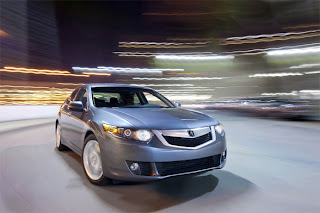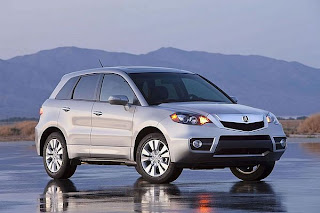2009 Alfa Romeo MiTo Quadrifoglio Verde
 The Alfa Romeo MiTo Quadrifoglio Verde will be powered by a 1.4 MultiAir TBi engine developing 170 hp. The Alfa MiTo Quadrifoglio Verde comes with the 17″ satin titanium-finished wheels which is based on the Alfa Romeo 8C Competizione supercar. The same color is used for the headlight frames and the wing mirrors, while the dark finish of the headlight parabolas is achieved by a brand new metal sublimation technology.
The Alfa Romeo MiTo Quadrifoglio Verde will be powered by a 1.4 MultiAir TBi engine developing 170 hp. The Alfa MiTo Quadrifoglio Verde comes with the 17″ satin titanium-finished wheels which is based on the Alfa Romeo 8C Competizione supercar. The same color is used for the headlight frames and the wing mirrors, while the dark finish of the headlight parabolas is achieved by a brand new metal sublimation technology.
 The Alfa Romeo MiTo Quadrifoglio Verde will be powered by a 1.4 MultiAir TBi engine developing 170 hp. The Alfa MiTo Quadrifoglio Verde comes with the 17″ satin titanium-finished wheels which is based on the Alfa Romeo 8C Competizione supercar. The same color is used for the headlight frames and the wing mirrors, while the dark finish of the headlight parabolas is achieved by a brand new metal sublimation technology.
The Alfa Romeo MiTo Quadrifoglio Verde will be powered by a 1.4 MultiAir TBi engine developing 170 hp. The Alfa MiTo Quadrifoglio Verde comes with the 17″ satin titanium-finished wheels which is based on the Alfa Romeo 8C Competizione supercar. The same color is used for the headlight frames and the wing mirrors, while the dark finish of the headlight parabolas is achieved by a brand new metal sublimation technology.Dynamic Suspension
Competitive racing has always been a testing ground for new technologies, which have found their way from the world’s most famous racetracks to standard road cars. One example of this passage between two seemingly very different worlds is dynamic suspension. This system, which actively and continuously controls the electronic shock absorbers, was developed by combining Alfa Romeo road testing with the latest engineering techniques from Magneti Marelli.
So, using experience gained on the racetrack, the system allows the MiTo Quadrifoglio Verde to excel even further in terms of agility and handling, giving it exceptional driveability and unparalleled safety. The driver gets three benefits from the Dynamic Suspension system: comfort, safety and agility. Above all, the electronic shock absorbers adapt to the road conditions and control all the car’s movements. This guarantees maximum comfort and ensures that the unevenness of road surfaces is fully absorbed. In addition, the Dynamic Suspension system always ensures maximum grip and safety by actively responding to all road conditions. Finally, because roll and pitch are more restricted in all conditions, there is better stability and cornering that adds to the undoubted agility of the Alfa Romeo MiTo.
 The suspension interacts perfectly with the three different control strategies of the Alfa DNA system. In “Normal”, agility is combined with a higher level of comfort, whereas in “All Weather”, the safety features are enhanced by continual interaction between the Vehicle Dynamic Control stability system, the steering and the suspension. Finally, in “Dynamic”, the MiTo becomes a true sports car clinging to the ground and fit for any road: it is no coincidence that the system was developed at the historic Balocco test track and round the corners of the Nurburgring. So, thanks to the hard work of Alfa Romeo and Magneti Marelli, the car is responsive and reliable when you turn the steering wheel or put your foot on the accelerator.
The suspension interacts perfectly with the three different control strategies of the Alfa DNA system. In “Normal”, agility is combined with a higher level of comfort, whereas in “All Weather”, the safety features are enhanced by continual interaction between the Vehicle Dynamic Control stability system, the steering and the suspension. Finally, in “Dynamic”, the MiTo becomes a true sports car clinging to the ground and fit for any road: it is no coincidence that the system was developed at the historic Balocco test track and round the corners of the Nurburgring. So, thanks to the hard work of Alfa Romeo and Magneti Marelli, the car is responsive and reliable when you turn the steering wheel or put your foot on the accelerator.The innovative Dynamic Suspension system is made up of four electronically controlled shock absorbers, five accelerometric sensors, a control unit and an interface with Alfa DNA for the different settings and with the other on-board electronic systems.
Its main feature is to actively and continuously control the response of the shock absorbers, which adapt depending on the movement of the car and the road conditions, as well as the driving style. To sum up, the Dynamic Suspension system better protects passengers from uneven road surfaces thanks to an effective filtering and optimises comfort by recognising an obstacle (such as a bump or a hole) and adapting suspension behaviour accordingly. The system also ensures better cornering by altering damping distribution of the four shock absorbers, enhancing handling and hold thanks to advanced lateral dynamic control. What’s more, the Dynamic Suspension system manages longitudinal dynamic control by adjusting the movement of the chassis during acceleration, braking and gear changes, and by integrating perfectly with the Vehicle Dynamic Control, steering and braking systems.
The new six-speed C635 gearbox
The technological qualities of the Alfa Romeo MiTo Quadrifoglio Verde are further enhanced by the next-generation C635 gearbox. Developed by FPT and manufactured at the Verrone factory in Italy, this groundbreaking mechanical unit is the first result of a design philosophy aimed at improving driveability, consumption levels and production flexibility.
 As far as driveability is concerned, the new gearbox ensures clean and swift changes with very short selection movements, uniform activation pressures, no noise and no vibrations. In addition, modern design and construction techniques help to significantly reduce consumption levels thanks to less friction and the best possible gear ratios.
As far as driveability is concerned, the new gearbox ensures clean and swift changes with very short selection movements, uniform activation pressures, no noise and no vibrations. In addition, modern design and construction techniques help to significantly reduce consumption levels thanks to less friction and the best possible gear ratios.Its appearance in the Alfa MiTo 170 hp 1.4 MultiAir TBi marks the debut of a modern family of gearboxes adapted for a broad range of models.



















































